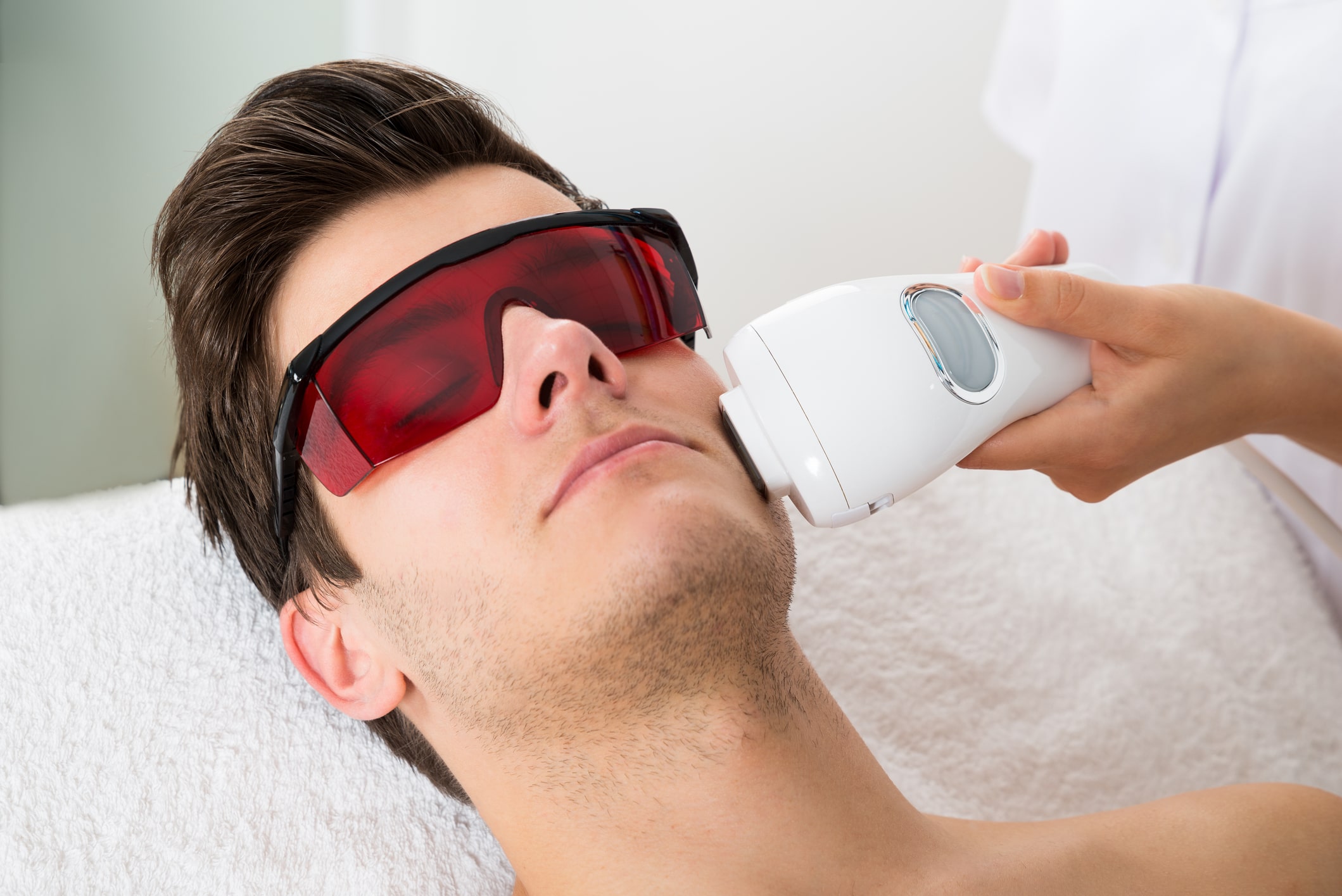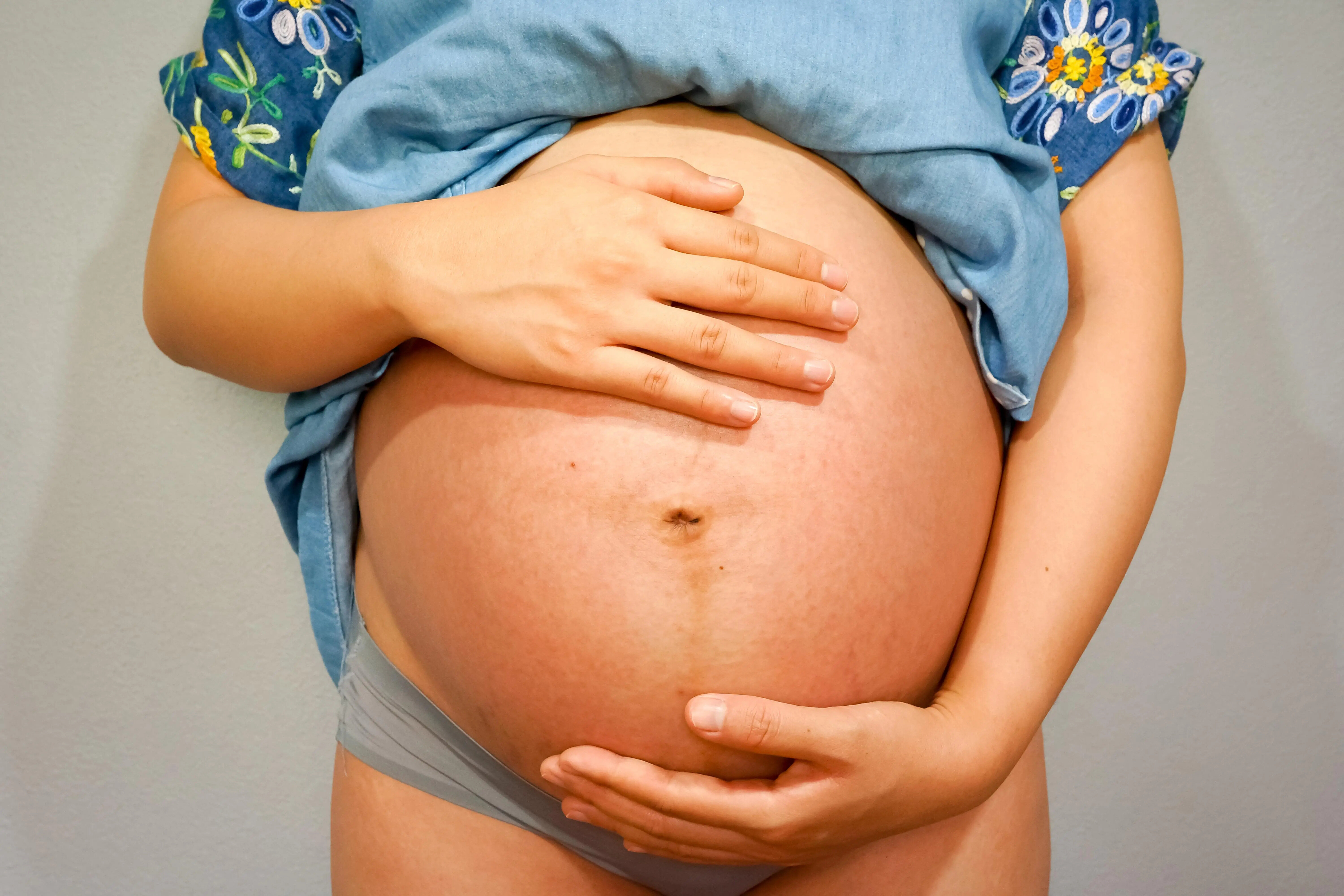

FAQs
When Does Hair Fall Out After Laser Hair Removal
Modified: August 5, 2023
Find the answer to your general questions about laser hair removal: discover when hair typically falls out after the procedure.
(Many of the links in this article redirect to a specific reviewed product. Your purchase of these products through affiliate links helps to generate commission for Under-tec.com, at no extra cost. Learn more)
Table of Contents
Introduction
Laser hair removal has become a popular choice for individuals looking to permanently reduce or eliminate unwanted hair growth. With its precision and long-lasting results, this non-invasive procedure has revolutionized the way people manage their grooming routines. However, one common question that arises when considering laser hair removal is when does the hair actually fall out after the treatment?
In this comprehensive guide, we will delve into the intricacies of laser hair removal and shed light on the timeline for hair fall-out. Understanding this process will help individuals undergoing laser hair removal to have a better expectation and manage their post-treatment period more effectively.
Before we explore when the hair falls out, let’s first gain a basic understanding of how laser hair removal works. By using highly concentrated laser beams, the hair follicles are targeted, leading to their destruction and subsequent inhibition of hair growth. The laser energy is absorbed by the pigment in the hair follicles, causing damage to the follicle while leaving the surrounding skin unharmed.
It is important to note that laser hair removal is a gradual process and requires multiple sessions to achieve optimal results. The number of sessions needed varies depending on factors such as individual hair growth patterns, hair thickness, and the target area.
Understanding Laser Hair Removal
Laser hair removal is a popular cosmetic procedure that uses laser technology to target and destroy hair follicles, thereby inhibiting hair growth. The procedure is effective in reducing unwanted hair in various areas of the body, including the face, legs, arms, underarms, bikini line, and back.
During the treatment, a laser device emits a concentrated beam of light that is absorbed by the pigment in the hair follicles. The energy from the laser is converted into heat, which damages the follicles and impairs their ability to produce hair. The surrounding skin is carefully protected with cooling mechanisms to minimize discomfort and prevent any damage.
It is important to note that laser hair removal is most effective on dark hair and fair skin, as the contrast between the hair color and the skin allows the laser to more effectively target the hair follicles. However, advancements in laser technology have made it possible to treat a wider range of skin and hair colors with varying degrees of success.
The success of laser hair removal is dependent on several factors, including the individual’s hair color and thickness, skin type, and hormonal influences. Dark, coarse hair typically responds best to treatment, while fine, light-colored hair may require more sessions to achieve desired results. Additionally, hormonal changes can affect hair growth, so it is important to discuss any underlying conditions or medications with the treating professional before undergoing laser hair removal.
It is worth mentioning that laser hair removal is a process that requires multiple sessions to achieve significant and long-lasting results. Hair grows in cycles, and the laser can only target hairs in the growth phase. As a result, multiple treatments are necessary to ensure that all hair follicles are effectively treated at their optimal growth stage.
Now that we have a basic understanding of how laser hair removal works, let’s explore what to expect during the treatment and post-treatment period.
What to Expect During Laser Hair Removal
Before embarking on your laser hair removal journey, it’s essential to know what to expect during the treatment sessions. By understanding the process, you can better prepare yourself and have a more comfortable experience.
First, it’s important to find a reputable and qualified laser hair removal specialist or clinic that uses FDA-approved equipment. During your initial consultation, the specialist will assess your skin type and hair color, discuss your goals and expectations, and provide you with a customized treatment plan.
Prior to each treatment session, you may be advised to avoid sun exposure and discontinue any hair removal methods that could disrupt the hair growth cycle, such as waxing or plucking. Shaving is typically allowed, as it doesn’t remove the hair follicle from the root.
On the day of the treatment, you’ll be asked to remove any makeup, lotions, or creams from the areas being treated. The specialist may apply a cooling gel or numbing cream to the skin to minimize discomfort during the procedure.
Once you’re ready, the specialist will use a handheld laser device to target the specific areas of unwanted hair. You will be given protective eyewear to shield your eyes from the laser light. The laser will be passed over the treatment area, emitting short pulses of light. Some individuals describe the sensation as a rubber band snapping against the skin, while others may feel a warm or tingling sensation.
The duration of each treatment session depends on the size of the treatment area. Smaller areas, such as the upper lip or underarms, may take only a few minutes, while larger areas, like the legs or back, can take up to an hour.
After the treatment, you may experience some redness, swelling, or mild discomfort in the treated areas. These side effects are temporary and typically subside within a few hours to a couple of days. You may be advised to avoid sun exposure, hot showers, saunas, or intense physical activity for a brief period after the treatment.
It’s important to note that laser hair removal is a gradual process, and multiple sessions are required to achieve optimal results. The interval between sessions is usually four to six weeks, allowing time for the hair to enter the active growth phase.
Now that we’ve covered what to expect during the treatment, let’s move on to the immediate post-treatment period and the subsequent hair shedding process.
Immediate Post-Treatment Period
After each laser hair removal session, it’s important to take extra care of your skin during the immediate post-treatment period. While the procedure is generally safe and minimally invasive, your skin may need some time to recover.
Immediately after the treatment, you may experience some temporary side effects, including redness, swelling, and mild discomfort in the treated areas. These reactions are normal and typically subside within a few hours to a couple of days. Applying a cold compress or ice pack to the treated areas can help soothe any discomfort or inflammation.
You should avoid any activities that could irritate or damage your skin, such as excessive sweating, hot showers, saunas, or swimming in chlorinated pools. It’s also important to avoid exposing the treated areas to direct sunlight and wear a broad-spectrum sunscreen with a high SPF to protect the skin from UV rays.
During the immediate post-treatment period, you may notice that the treated hair remains intact. This is normal, as the hair follicles have been damaged by the laser, but it takes time for the hair to shed completely. It’s important to resist the urge to pluck, wax, or use any hair removal methods that may disrupt the hair shedding process.
It’s also worth mentioning that individual experiences may vary. Some individuals may have a smoother and quicker recovery, while others may experience more pronounced side effects. It’s essential to follow the post-treatment instructions provided by your specialist or clinic to ensure proper healing and optimal results.
Now that we’ve covered the immediate post-treatment period, let’s explore the hair shedding process, which is an essential part of the laser hair removal journey.
The Hair Shedding Process
After undergoing laser hair removal, the hair shedding process is a natural part of the treatment’s effectiveness. It’s important to understand this process to have realistic expectations and avoid any unnecessary concern.
Following the treatment, you may notice that the hair in the treated areas becomes loose and begins to fall out. This is an indication that the hair follicles have been effectively damaged by the laser, and the shedding process has initiated. However, it’s important to note that not all hairs will shed at once. Hair growth occurs in cycles, and individual hairs may be at different stages of the growth cycle at the time of treatment.
The shedding process typically occurs within 1 to 3 weeks after the laser hair removal session. You may notice the hair becoming more sparse and gradually falling out. It’s important to avoid forcefully pulling out the hair, as this can interrupt the natural shedding process and potentially cause irritation or ingrown hairs.
It’s essential to keep in mind that not all hair may shed immediately after each treatment session. Some hair follicles may take longer to fully shed, and multiple sessions are usually necessary to target all the different stages of hair growth effectively.
During the shedding process, it’s crucial to continue following the post-treatment care instructions provided by your specialist. This includes avoiding sun exposure, using sunscreen, and refraining from any activities that could irritate the treated areas.
It’s also important to remember that laser hair removal does not guarantee permanent hair removal in every case. While the treatment can lead to long-lasting hair reduction, some hair follicles may reactivate over time, and maintenance sessions may be needed to maintain the desired results.
Now that we’ve explored the hair shedding process, let’s discuss the factors that can affect the timeline for hair fall-out after laser hair removal.
Factors Affecting Hair Shedding after Laser Hair Removal
The timeline for hair fall-out after laser hair removal can vary from person to person. Several factors can influence the shedding process and impact the duration it takes for the treated hair to completely fall out. Understanding these factors can help manage expectations and ensure optimal results.
1. Hair Growth Cycle: Hair grows in different phases, including the anagen (active growth), catagen (transition), and telogen (resting/shedding) phases. Laser hair removal is most effective on hair in the anagen phase, as this is when the hair follicle actively absorbs the laser energy. Since not all hairs are in the same growth phase at any given time, multiple treatment sessions are necessary to target a higher percentage of hairs in the active growth phase.
2. Hair Thickness and Color: The thickness and color of the hair being treated can also affect the shedding process. Dark, coarse hairs tend to respond better to laser hair removal, as they have more pigment to absorb the laser energy. Fine, light-colored hairs may require additional sessions to achieve desired results, as they are less responsive to the laser’s targeting.
3. Treatment Parameters: The settings and parameters used during the laser hair removal treatment can also impact the shedding process. The laser energy intensity, pulse duration, and spot size can vary depending on the individual’s hair and skin type. A skilled specialist or technician will adjust the treatment parameters to ensure optimal energy absorption by the hair follicles while minimizing the risk of skin damage.
4. Hormonal Influences: Hormonal changes can affect hair growth patterns and the shedding process. Hormonal imbalances, such as those caused by pregnancy, menopause, or certain medical conditions, can disrupt the hair growth cycle and lead to delayed or irregular shedding after laser hair removal. It’s important to discuss any hormonal concerns with your specialist to understand how they may impact the treatment process.
5. Compliance with Post-Treatment Care: Following proper post-treatment care instructions is crucial to promoting effective hair shedding after laser hair removal. Protecting the treated areas from sun exposure, avoiding activities that could irritate the skin, and using recommended skincare products can all contribute to a smoother shedding process and better results.
It’s important to consult with a qualified specialist or technician before undergoing laser hair removal to discuss your specific situation and ensure that you have realistic expectations regarding the shedding process.
In the next section, we will provide a typical timeline for hair fall-out after laser hair removal based on general observations and common experiences.
Typical Timeline for Hair Fall-Out
The timeline for hair fall-out after laser hair removal can vary from person to person. While there is no exact formula, there is a typical progression that many individuals experience. Understanding this timeline can help manage expectations and alleviate any concerns during the shedding process.
1. Immediate Post-Treatment: Immediately after each laser hair removal session, you may notice some redness, swelling, and mild discomfort in the treated areas. The hair follicles have been damaged, but the hair remains intact at this point.
2. 1 to 3 Weeks: Within the first 1 to 3 weeks following the treatment, you may start to notice the hair becoming looser and gently falling out. This is the beginning of the shedding process as the damaged hair follicles release the treated hair. It’s important to note that not all hairs will shed at once, as they may be in different stages of the growth cycle.
3. 4 to 6 Weeks: As the weeks progress, more hair will continue to shed gradually. It’s common to see a decrease in hair thickness and density in the treated areas during this stage.
4. 6 to 8 Weeks: By this time, the majority of the treated hair should have fallen out. However, it’s important to remember that individual experiences may vary, and some cases may require additional time for complete hair shedding.
5. Follow-Up Sessions: Laser hair removal typically requires multiple treatment sessions to target all hairs effectively at different stages of growth. The intervals between sessions can range from 4 to 8 weeks, depending on the area being treated and the individual’s hair growth cycle.
It’s important to note that some individuals may experience slight variations in the timeline due to factors such as hair thickness, hair color, hormonal influences, and individual response to the treatment. Additionally, maintenance sessions may be required in the future to address any regrowth that may occur over time.
During the shedding process, it’s crucial to maintain proper aftercare and follow the recommendations provided by your specialist or technician. This includes avoiding sun exposure, using sunscreen, and refraining from any activities that could irritate the treated areas.
Now that we have explored the typical timeline for hair fall-out after laser hair removal, let’s discuss how to manage hair shedding during and after the treatment process.
Managing Hair Shedding after Laser Hair Removal
Managing hair shedding after laser hair removal is an important aspect of the treatment process. While the shedding process is a natural part of the treatment’s effectiveness, there are steps you can take to minimize discomfort and promote optimal results.
1. Avoid Plucking or Waxing: It’s crucial to resist the temptation to pluck or wax the treated hair during the shedding process. Pulling out the hair can disrupt the natural shedding process and potentially cause irritation or ingrown hairs. Instead, let the hair naturally fall out on its own.
2. Gentle Exfoliation: As the treated hair sheds, gentle exfoliation can help remove any loosened hair and prevent it from becoming trapped in the skin. Use a mild exfoliating scrub or a soft washcloth to gently slough away dead skin cells and promote smoother, clearer skin.
3. Moisturize the Skin: Keeping the treated areas well-moisturized can help soothe any dryness or itching associated with the shedding process. Use a gentle, non-irritating moisturizer to hydrate the skin and promote healing.
4. Follow Post-Treatment Care Instructions: It’s important to continue following the post-treatment care instructions provided by your specialist or technician. This may include avoiding sun exposure, wearing sunscreen, and refraining from activities that could irritate the treated areas. By adhering to these guidelines, you can help promote effective hair shedding and protect the treated skin.
5. Be Patient: While waiting for the hair to completely shed and see the full results of laser hair removal, it’s important to be patient. Remember that the shedding process can take several weeks, and individual responses may vary. Trust the process and give your body the time it needs to naturally shed the treated hair.
6. Schedule Follow-Up Sessions: Laser hair removal often requires multiple treatment sessions to target all hairs effectively. To achieve desired results and maintain long-term hair reduction, it’s important to schedule and attend follow-up sessions as recommended by your specialist or technician.
By following these tips and guidelines, you can manage hair shedding after laser hair removal and optimize the results of your treatment. If you have any concerns or questions during the shedding process, don’t hesitate to reach out to your specialist or clinic for support and guidance.
Now that we’ve discussed how to manage hair shedding, let’s summarize the key points and wrap up our comprehensive guide on when hair falls out after laser hair removal.
Conclusion
Laser hair removal is a highly effective method for reducing or eliminating unwanted hair growth. Understanding the timeline for hair fall-out after the treatment can help manage expectations and ensure a smoother experience.
Immediately after the treatment, you may experience some redness, swelling, and discomfort in the treated areas. Within 1 to 3 weeks, the hair will begin to shed as the damaged follicles release the treated hair. The shedding process continues over several weeks, with the majority of the treated hair falling out within 6 to 8 weeks. However, individual experiences may vary due to factors such as hair thickness, color, hormonal influences, and treatment settings. Multiple sessions are usually required for optimal results, and maintenance sessions may be necessary in the future.
To effectively manage hair shedding, avoid plucking or waxing the treated hair and practice gentle exfoliation and moisturization. Follow the post-treatment care instructions provided by your specialist and be patient throughout the shedding process.
Overall, laser hair removal offers a long-lasting solution for unwanted hair, providing individuals with the freedom and confidence to enjoy smooth, hair-free skin. If you’re considering laser hair removal, consult with a qualified specialist or clinic to discuss your goals, expectations, and personalized treatment plan.
With the right information and proper care, you can confidently navigate the hair shedding process and embrace the results of your laser hair removal journey.









